Basia to bohaterka znana z książek Zofii Staneckiej i Marianny Oklejak. Ma 5 lat i tak zwany charakterek. Mieszka w mieście z rodzicami, dwójką braci, żółwiem Kajetanem i pluszowym przyjacielem Miśkiem Zdziśkiem. Czasami Basia, jak każdy przedszkolak, napotyka wielkie problemy, z którymi musi sobie poradzić. Skrzące się humorem i urzekające wnikliwym spojrzeniem przygody dziewczynki i jej przyjaciół, pokazują świat bliski każdej rodzinie.
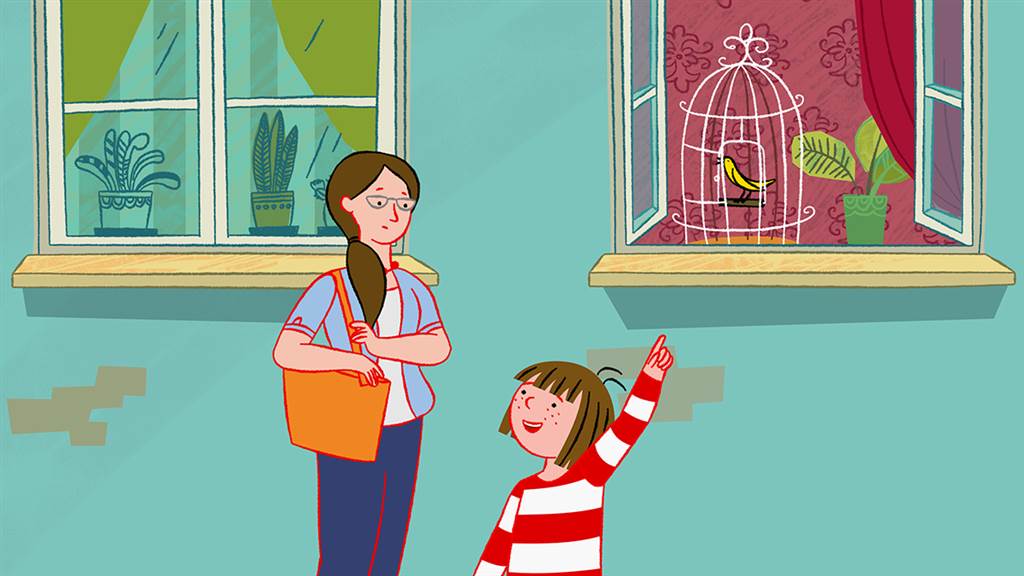
Basia
reż. Marcin Wasilewski, Łukasz Kacprowicz, Polska 2018, animacja, 55 min.
film w języku polskim • kategoria wiekowa 4+
21 listopada (środa), 10.00
Kijów Centrum – Duża sala

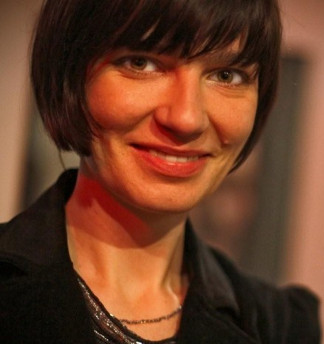 Kaja Renkas is an artist, designer and poster artist who in her art makes of the high-tech digital media. She is a graduate of the printmaking department of the Academy of Fine Arts in Katowice. Since 2011 she has been working as a pedagogue at the Institute of Art of the Silesian University, at the Video Games and Virtual Space Design department. She is a laureate of numerous awards and distinctions for her posters; her works can be found, among others, in the Poster Museum in Wilanów, National Museum in Poznań, Poster Museum in Osaka. She has participated in many individual exhibitions all over the world at, among others, Haight Street Art Center, San Francisco (USA); Gallery 215, Northern Illinois University, DeKalb (USA); 2600 Cherokee Street, St. Louis (USA); Gallery of the Belorussian Academy of Fine Arts, Minsk; Gallery Zed, Leuven (Belgium); Polish Poster Gallery, Berlin (Germany). She has run graphic design workshops in Great Britain, USA, Turkey and Romania. She has taken part in the world’s most important poster events held in, among others, Warsaw, Bolivia, Teheran, Lahti, Toyama and Moscow. Kaja Renkas is the author of this year’s poster of the IFF Etiuda&Anima 2018 as well as the poster of the promotional event called Polish School of Animation – Next Generations IV; Stuttgart, Turku, Viborg, Volda, Riga organized by Etiuda&Anima Foundation.
Kaja Renkas is an artist, designer and poster artist who in her art makes of the high-tech digital media. She is a graduate of the printmaking department of the Academy of Fine Arts in Katowice. Since 2011 she has been working as a pedagogue at the Institute of Art of the Silesian University, at the Video Games and Virtual Space Design department. She is a laureate of numerous awards and distinctions for her posters; her works can be found, among others, in the Poster Museum in Wilanów, National Museum in Poznań, Poster Museum in Osaka. She has participated in many individual exhibitions all over the world at, among others, Haight Street Art Center, San Francisco (USA); Gallery 215, Northern Illinois University, DeKalb (USA); 2600 Cherokee Street, St. Louis (USA); Gallery of the Belorussian Academy of Fine Arts, Minsk; Gallery Zed, Leuven (Belgium); Polish Poster Gallery, Berlin (Germany). She has run graphic design workshops in Great Britain, USA, Turkey and Romania. She has taken part in the world’s most important poster events held in, among others, Warsaw, Bolivia, Teheran, Lahti, Toyama and Moscow. Kaja Renkas is the author of this year’s poster of the IFF Etiuda&Anima 2018 as well as the poster of the promotional event called Polish School of Animation – Next Generations IV; Stuttgart, Turku, Viborg, Volda, Riga organized by Etiuda&Anima Foundation.
 Artystka, projektantka, plakacistka, wykorzystuje w swoich działaniach najnowsze media cyfrowe. Jest absolwentką grafiki warsztatowej na Akademii Sztuk Pięknych w Katowicach. Od 2011 r. prowadzi działalność pedagogiczną w Instytucie Sztuki Uniwersytetu Śląskiego na kierunku Projektowanie Gier i Przestrzeni Wirtualnej. Laureatka nagród i wyróżnień w dziedzinie plakatu, jej prace znajdują się m.in. w: Muzeum Plakatu w Wilanowie, Muzeum Narodowym w Poznaniu, Muzeum Plakatu w Osace. Brała udział w wielu indywidualnych wystawach na całym świecie, m.in. w takich miejscach jak: Haight Street Art. Center, San Francisco (USA); Gallery 215, Northern Illinois University, DeKalb (USA); 2600 Cherokee Street, St. Louis (USA); Galeria Białoruskiej Akademii Sztuk Pięknych, Mińsk; Gallery Zed, Leuven (Belgia); Polish Poster Gallery, Berlin (Niemcy). Prowadziła warsztaty z projektowania graficznego oraz plakatu w Wielkiej Brytanii, USA, Turcji i Rumunii. Jest uczestniczką najważniejszych światowych imprez plakatowych, m.in. w Warszawie, Boliwii, Teheranie, Lahti, Toyamie i Moskwie. Kaja Renkas jest autorką tegorocznego plakatu MFF Etiuda&Anima 2018 oraz plakatu organizowanej przez Fundację Etiuda&Anima imprezy promocyjnej Polish School of Animation – Next Generations IV; Stuttgart, Turku, Viborg, Volda, Riga.
Artystka, projektantka, plakacistka, wykorzystuje w swoich działaniach najnowsze media cyfrowe. Jest absolwentką grafiki warsztatowej na Akademii Sztuk Pięknych w Katowicach. Od 2011 r. prowadzi działalność pedagogiczną w Instytucie Sztuki Uniwersytetu Śląskiego na kierunku Projektowanie Gier i Przestrzeni Wirtualnej. Laureatka nagród i wyróżnień w dziedzinie plakatu, jej prace znajdują się m.in. w: Muzeum Plakatu w Wilanowie, Muzeum Narodowym w Poznaniu, Muzeum Plakatu w Osace. Brała udział w wielu indywidualnych wystawach na całym świecie, m.in. w takich miejscach jak: Haight Street Art. Center, San Francisco (USA); Gallery 215, Northern Illinois University, DeKalb (USA); 2600 Cherokee Street, St. Louis (USA); Galeria Białoruskiej Akademii Sztuk Pięknych, Mińsk; Gallery Zed, Leuven (Belgia); Polish Poster Gallery, Berlin (Niemcy). Prowadziła warsztaty z projektowania graficznego oraz plakatu w Wielkiej Brytanii, USA, Turcji i Rumunii. Jest uczestniczką najważniejszych światowych imprez plakatowych, m.in. w Warszawie, Boliwii, Teheranie, Lahti, Toyamie i Moskwie. Kaja Renkas jest autorką tegorocznego plakatu MFF Etiuda&Anima 2018 oraz plakatu organizowanej przez Fundację Etiuda&Anima imprezy promocyjnej Polish School of Animation – Next Generations IV; Stuttgart, Turku, Viborg, Volda, Riga.
 Born in 1943, Ak-Bułak, in the territory of today’s Kazakhstan, is a film director and scriptwriter who graduated from the directing department of Lodz Film School. He is a younger brother of a director Andrzej Kondratiuk. Already as a student, he made his first international success at the festival in Oberhausen in 1969 with his etude titled “Let’s Not Talk About It Anymore” (“Nie mówmy o tym więcej”). At the turn of the 1960s and 70s he made such succesful TV films as: “How to Win a Woman”, “Money and Fame” (“Jak zdobyć kobietę, pieniądze i sławę”, 1969), “Available Girls” (“Dziewczyny do wzięcia”, 1972) and “Blissful” (“Wniebowzięci”, co-directed with his brother Andrzej, 1973). Films of both Kondratiuk brothers are said to share similarities with those of the Czech film wave, especially the ones made by Forman and Menzel. Later, after moving abroad, Janusz Kondratiuk was for many years a film directing lecturer at the university in Linz. Recently, he has been again collaborating with the Polish television and directing some episodes of TV series. His latest feature autobiographical film “Fighting Like Cat and Dog” (“Jak pies z kotem”) was a considerable success at this year’s Gdynia Film Festival and won awards for the best actors Olgierd Łukaszewicz and Aleksandra Konieczna.
Born in 1943, Ak-Bułak, in the territory of today’s Kazakhstan, is a film director and scriptwriter who graduated from the directing department of Lodz Film School. He is a younger brother of a director Andrzej Kondratiuk. Already as a student, he made his first international success at the festival in Oberhausen in 1969 with his etude titled “Let’s Not Talk About It Anymore” (“Nie mówmy o tym więcej”). At the turn of the 1960s and 70s he made such succesful TV films as: “How to Win a Woman”, “Money and Fame” (“Jak zdobyć kobietę, pieniądze i sławę”, 1969), “Available Girls” (“Dziewczyny do wzięcia”, 1972) and “Blissful” (“Wniebowzięci”, co-directed with his brother Andrzej, 1973). Films of both Kondratiuk brothers are said to share similarities with those of the Czech film wave, especially the ones made by Forman and Menzel. Later, after moving abroad, Janusz Kondratiuk was for many years a film directing lecturer at the university in Linz. Recently, he has been again collaborating with the Polish television and directing some episodes of TV series. His latest feature autobiographical film “Fighting Like Cat and Dog” (“Jak pies z kotem”) was a considerable success at this year’s Gdynia Film Festival and won awards for the best actors Olgierd Łukaszewicz and Aleksandra Konieczna.
 Urodzony w 1943 roku w Ak-Bułak na terenie dzisiejszego Kazachstanu, reżyser i scenarzysta, absolwent reżyserii PWSFTviT w Łodzi. Młodszy brat reżysera Andrzeja Kondratiuka. Już jako student odniósł pierwszy międzynarodowy sukces na festiwalu w Oberhausen w 1969 r. etiudą „Nie mówmy o tym więcej”. Na przełomie lat 60. i 70. realizował z powodzeniem telewizyjne filmy, m.in.: „Jak zdobyć kobietę, pieniądze i sławę” (1969), „Dziewczyny do wzięcia” (1972) i „Wniebowzięci” (współpraca reżyserska z bratem Andrzejem – 1973). O filmach obydwu braci głoszono opinię, że bliskie są osiągnięciom czeskiej Nowej Fali filmowej, zwłaszcza Formanowi i Menzlowi. Później, po wyjeździe za granicę, przez długie lata był wykładowcą reżyserii na uniwersytecie w Linzu. W ostatnim okresie ponownie współpracował z telewizją polską, realizując odcinki telewizyjnych seriali. Jego najnowszy pełnometrażowy autobiograficzny film „Jak pies z kotem” odniósł znaczący sukces na tegorocznym festiwalu w Gdyni, przynosząc nagrody za kreacje aktorskie Olgierdowi Łukaszewiczowi i Aleksandrze Koniecznej.
Urodzony w 1943 roku w Ak-Bułak na terenie dzisiejszego Kazachstanu, reżyser i scenarzysta, absolwent reżyserii PWSFTviT w Łodzi. Młodszy brat reżysera Andrzeja Kondratiuka. Już jako student odniósł pierwszy międzynarodowy sukces na festiwalu w Oberhausen w 1969 r. etiudą „Nie mówmy o tym więcej”. Na przełomie lat 60. i 70. realizował z powodzeniem telewizyjne filmy, m.in.: „Jak zdobyć kobietę, pieniądze i sławę” (1969), „Dziewczyny do wzięcia” (1972) i „Wniebowzięci” (współpraca reżyserska z bratem Andrzejem – 1973). O filmach obydwu braci głoszono opinię, że bliskie są osiągnięciom czeskiej Nowej Fali filmowej, zwłaszcza Formanowi i Menzlowi. Później, po wyjeździe za granicę, przez długie lata był wykładowcą reżyserii na uniwersytecie w Linzu. W ostatnim okresie ponownie współpracował z telewizją polską, realizując odcinki telewizyjnych seriali. Jego najnowszy pełnometrażowy autobiograficzny film „Jak pies z kotem” odniósł znaczący sukces na tegorocznym festiwalu w Gdyni, przynosząc nagrody za kreacje aktorskie Olgierdowi Łukaszewiczowi i Aleksandrze Koniecznej.
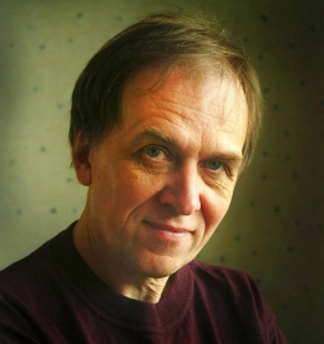 Born in 1948 in Poznań, is a graduate of the National Higher School of Fine Arts in Poznań. He is an author of animated films and a pedagogue leading an animation studio at the animation department of the University of Arts in Poznań and Academy of Fine Arts in Warsaw. From the beginning of his creative career he has been inspired by the media dimension of animated film, sometimes making references to the tradition of graphic arts and prehistory of cinema (Magritte, Muybridge). He is regarded as an artist having a lot in common with a seeking attitude of Zbigniew Rybczyński from his most fruitful period of artistic creativity. Neumann’s films are included into the experimental trend in Polish animation and defined as combined films. They have been awarded at numerous festivals in Poland and abroad (among others, in Kraków, Poznań, Huesca, Oberhausen, Lausanne). In his career, apart from author films, he has also made films on commission (for classical music) as well as animations for children. Hieronim Neumann has been our festival’s guest a great number of times. In 2009 he presented his ”Self-portrait”, in 2011 he served as the chairman of ANIMA international competition jury, and last year, during the opening ceremony of the 24th IFF Etiuda&Anima 2017 he showed his latest combined film “Lift” (“Winda”) in which he is again trespassing the boundaries of animation.
Born in 1948 in Poznań, is a graduate of the National Higher School of Fine Arts in Poznań. He is an author of animated films and a pedagogue leading an animation studio at the animation department of the University of Arts in Poznań and Academy of Fine Arts in Warsaw. From the beginning of his creative career he has been inspired by the media dimension of animated film, sometimes making references to the tradition of graphic arts and prehistory of cinema (Magritte, Muybridge). He is regarded as an artist having a lot in common with a seeking attitude of Zbigniew Rybczyński from his most fruitful period of artistic creativity. Neumann’s films are included into the experimental trend in Polish animation and defined as combined films. They have been awarded at numerous festivals in Poland and abroad (among others, in Kraków, Poznań, Huesca, Oberhausen, Lausanne). In his career, apart from author films, he has also made films on commission (for classical music) as well as animations for children. Hieronim Neumann has been our festival’s guest a great number of times. In 2009 he presented his ”Self-portrait”, in 2011 he served as the chairman of ANIMA international competition jury, and last year, during the opening ceremony of the 24th IFF Etiuda&Anima 2017 he showed his latest combined film “Lift” (“Winda”) in which he is again trespassing the boundaries of animation.
 Urodzony w 1948 roku w Poznaniu, absolwent Poznańskiej Wyższej Szkoły Sztuk Plastycznych. Jest twórcą filmów animowanych i równocześnie pedagogiem prowadzącym pracownie animacji na Wydziale Animacji Uniwersytetu Artystycznego w Poznaniu i Akademii Sztuk Pięknych w Warszawie. Od początku twórczości inspiruje się medialnym wymiarem filmu animowanego, nawiązując niekiedy do tradycji sztuk plastycznych i prehistorii kina (Magritte, Muybridge). Uznawany jest za twórcę bliskiego poszukującej postawie Zbigniewa Rybczyńskiego z najbardziej owocnego okresu jego twórczości. Filmy Neumanna zalicza się do nurtu eksperymentalnego polskiej animacji i określa mianem filmów kombinowanych. Były one wielokrotnie nagradzane zarówno na krajowych, jak i międzynarodowych festiwalach (m.in. Kraków, Poznań, Huesca, Oberhausen, Lozanna). W swoim dorobku oprócz filmów autorskich ma także filmy na zamówienie (do muzyki klasycznej), a także bajki dla dzieci. Hieronim Neumann był wielokrotnie gościem naszego festiwalu. W 2009 r. zaprezentował swój „Autoportret”, w 2011 r. był przewodniczącym jury międzynarodowego konkursu ANIMA, zaś w zeszłym roku na inauguracji 24. MFF Etiuda& Anima 2017 pokazał swój najnowszy, ponownie przekraczający granice filmu animowanego, kombinowany film Winda.
Urodzony w 1948 roku w Poznaniu, absolwent Poznańskiej Wyższej Szkoły Sztuk Plastycznych. Jest twórcą filmów animowanych i równocześnie pedagogiem prowadzącym pracownie animacji na Wydziale Animacji Uniwersytetu Artystycznego w Poznaniu i Akademii Sztuk Pięknych w Warszawie. Od początku twórczości inspiruje się medialnym wymiarem filmu animowanego, nawiązując niekiedy do tradycji sztuk plastycznych i prehistorii kina (Magritte, Muybridge). Uznawany jest za twórcę bliskiego poszukującej postawie Zbigniewa Rybczyńskiego z najbardziej owocnego okresu jego twórczości. Filmy Neumanna zalicza się do nurtu eksperymentalnego polskiej animacji i określa mianem filmów kombinowanych. Były one wielokrotnie nagradzane zarówno na krajowych, jak i międzynarodowych festiwalach (m.in. Kraków, Poznań, Huesca, Oberhausen, Lozanna). W swoim dorobku oprócz filmów autorskich ma także filmy na zamówienie (do muzyki klasycznej), a także bajki dla dzieci. Hieronim Neumann był wielokrotnie gościem naszego festiwalu. W 2009 r. zaprezentował swój „Autoportret”, w 2011 r. był przewodniczącym jury międzynarodowego konkursu ANIMA, zaś w zeszłym roku na inauguracji 24. MFF Etiuda& Anima 2017 pokazał swój najnowszy, ponownie przekraczający granice filmu animowanego, kombinowany film Winda.
 Born in 1972 in Żilina in Slovakia. He graduated from the animation department of FAMU in Prague in 1999 and since then he has been working there as an animation lecturer. Starting from 2000 he has been living in Malešov where he founded Zvon Studio. He makes his own film, working as a director, scriptwriter, animator, editor and producer. As a student he participated in the 3rd IFF Etiuda (1996) with his film “Maskin Kills Koskin” and in the 5th IFF Etiuda (1998) during which he was distinguished with a honorary mention for his “Bloody Hugo” which was recognized as the best animation in the festival competition. Klimt is an author of short and feature animated films which have been numerously awarded at various festivals – his “Filmfarum” (2002) and “Filmfarum II” (2006) received, among others, the award of the Czech Film Academy – the Czech Lions. His latest feature animation “Laika” (2017), which we present at this year’s Anima& Etiuda Festival out of competition, was also awarded with the Czech Lion. Aurel Klimt is also the author of theatre plays and producer of commercials.
Born in 1972 in Żilina in Slovakia. He graduated from the animation department of FAMU in Prague in 1999 and since then he has been working there as an animation lecturer. Starting from 2000 he has been living in Malešov where he founded Zvon Studio. He makes his own film, working as a director, scriptwriter, animator, editor and producer. As a student he participated in the 3rd IFF Etiuda (1996) with his film “Maskin Kills Koskin” and in the 5th IFF Etiuda (1998) during which he was distinguished with a honorary mention for his “Bloody Hugo” which was recognized as the best animation in the festival competition. Klimt is an author of short and feature animated films which have been numerously awarded at various festivals – his “Filmfarum” (2002) and “Filmfarum II” (2006) received, among others, the award of the Czech Film Academy – the Czech Lions. His latest feature animation “Laika” (2017), which we present at this year’s Anima& Etiuda Festival out of competition, was also awarded with the Czech Lion. Aurel Klimt is also the author of theatre plays and producer of commercials.
 Urodzony w 1972 roku w Żilinie na Słowacji. Ukończył animację na praskiej FAMU w 1999 r., od tego samego roku wykłada na wydziale animacji macierzystej uczelni. Od 2000 r. mieszka w Malešovie, gdzie założył Studio Zvon. Realizuje swoje filmy, angażując się jako reżyser, scenarzysta, animator, montażysta i producent. Jako student brał udział w III MFF Etiuda (1996) filmem „Maskin zabił Koskina” i w V festiwalu Etiuda (1998), otrzymując wyróżnienie za film „Krwawy Hugo”, uznany za najlepszą animację w festiwalowym konkursie. Jest twórcą krótkometrażowych i pełnometrażowych filmów animowanych, które odnosiły festiwalowe sukcesy: filmy „Filmfarum” (2002) i „Filmfarum II” (2006) otrzymały m.in. nagrodę Czeskiej Akademii Filmowej – Czeskie Lwy. Jego ostatnia pełnometrażowa animacja „Laika” (2017), którą pokazujemy poza konkursem na tegorocznym festiwalu Etiuda&Anima, również została laureatem nagrody Czeskie Lwy. Aurel Klimt jest także autorem sztuk teatralnych i realizatorem reklam.
Urodzony w 1972 roku w Żilinie na Słowacji. Ukończył animację na praskiej FAMU w 1999 r., od tego samego roku wykłada na wydziale animacji macierzystej uczelni. Od 2000 r. mieszka w Malešovie, gdzie założył Studio Zvon. Realizuje swoje filmy, angażując się jako reżyser, scenarzysta, animator, montażysta i producent. Jako student brał udział w III MFF Etiuda (1996) filmem „Maskin zabił Koskina” i w V festiwalu Etiuda (1998), otrzymując wyróżnienie za film „Krwawy Hugo”, uznany za najlepszą animację w festiwalowym konkursie. Jest twórcą krótkometrażowych i pełnometrażowych filmów animowanych, które odnosiły festiwalowe sukcesy: filmy „Filmfarum” (2002) i „Filmfarum II” (2006) otrzymały m.in. nagrodę Czeskiej Akademii Filmowej – Czeskie Lwy. Jego ostatnia pełnometrażowa animacja „Laika” (2017), którą pokazujemy poza konkursem na tegorocznym festiwalu Etiuda&Anima, również została laureatem nagrody Czeskie Lwy. Aurel Klimt jest także autorem sztuk teatralnych i realizatorem reklam.
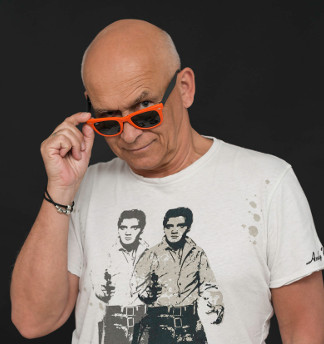 Born in 1953 in Warsaw, is a graduate of the National Higher School of Fine Arts in Poznań (with a diploma from prof. Waldemar Świerzy’s studio). He works in the field of functional graphics and is widely known for his film, theatre and festival posters, as well as his socially and politically engaged graphic works. He has been succesful both in Poland and abroad and as a representative of yet another generation of the Polish poster school, he has received a number of awards, among others in competitions for the best poster announced by ”The Hollywood Reporter” in Los Angeles (the so-called Oscar posters). Having already had a considerable artistic output from the period before Poland’s political transformation, he knew how to adapt to the new economic reality and the world of commercial advertising and make use of the possibilities created by new technologies. We are very pleased to inform that Andrzej Pągowski is the author of the next year’s 26th edition of International Film Festival Etiuda&Anima 2019.
Born in 1953 in Warsaw, is a graduate of the National Higher School of Fine Arts in Poznań (with a diploma from prof. Waldemar Świerzy’s studio). He works in the field of functional graphics and is widely known for his film, theatre and festival posters, as well as his socially and politically engaged graphic works. He has been succesful both in Poland and abroad and as a representative of yet another generation of the Polish poster school, he has received a number of awards, among others in competitions for the best poster announced by ”The Hollywood Reporter” in Los Angeles (the so-called Oscar posters). Having already had a considerable artistic output from the period before Poland’s political transformation, he knew how to adapt to the new economic reality and the world of commercial advertising and make use of the possibilities created by new technologies. We are very pleased to inform that Andrzej Pągowski is the author of the next year’s 26th edition of International Film Festival Etiuda&Anima 2019.
 Urodzony w 1953 roku w Warszawie, absolwent Państwowej Wyższej Szkoły Sztuk Plastycznych w Poznaniu (dyplom w pracowni prof. Waldemara Świerzego). Uprawia grafikę użytkową, znany jest powszechnie ze swoich plakatów filmowych, teatralnych, festiwalowych, jak również poświęconych tematyce społeczno- politycznej. Odnosi sukcesy w kraju i za granicą jako przedstawiciel kolejnego pokolenia polskiej szkoły plakatu, wielokrotnie był nagradzany, m.in. w konkursach na najlepszy plakat ogłaszanych przez „The Hollywood Reporter” w Los Angeles (tzw. plakatowe Oscary). Mając duży dorobek artystyczny z okresu przed transformacją, w realiach nowej ekonomicznej rzeczywistości umiał odnaleźć się w świecie komercyjnej reklamy i wykorzystać warunki stwarzane przez nowe technologie. Z przyjemnością informujemy, że Andrzej Pągowski jest autorem plakatu na przyszłoroczną, 26. edycję Międzynarodowego Festiwalu Filmowego Etiuda&Anima 2019.
Urodzony w 1953 roku w Warszawie, absolwent Państwowej Wyższej Szkoły Sztuk Plastycznych w Poznaniu (dyplom w pracowni prof. Waldemara Świerzego). Uprawia grafikę użytkową, znany jest powszechnie ze swoich plakatów filmowych, teatralnych, festiwalowych, jak również poświęconych tematyce społeczno- politycznej. Odnosi sukcesy w kraju i za granicą jako przedstawiciel kolejnego pokolenia polskiej szkoły plakatu, wielokrotnie był nagradzany, m.in. w konkursach na najlepszy plakat ogłaszanych przez „The Hollywood Reporter” w Los Angeles (tzw. plakatowe Oscary). Mając duży dorobek artystyczny z okresu przed transformacją, w realiach nowej ekonomicznej rzeczywistości umiał odnaleźć się w świecie komercyjnej reklamy i wykorzystać warunki stwarzane przez nowe technologie. Z przyjemnością informujemy, że Andrzej Pągowski jest autorem plakatu na przyszłoroczną, 26. edycję Międzynarodowego Festiwalu Filmowego Etiuda&Anima 2019.
Classic documentary from the time before the Prague Spring. In one interview, Jan Špáta, a cinematographer, said about his film debut: ”Questions asked in the documentary not only force the youth to communicate, but bother us, the older generation, as well. Moreover, they provoke us to express honest opinions. Using the filmmedium, I wanted to show the youth of today. Their new system of values is sometimes discredited. I’m not the only one pondering over this problem. I wish this documentary attracted interest not only of the “older” audience, but also of young people. So that they could identify with it. Through “Biggest Dream” I intended to move a survey towards film. I’m convinced that a survey which fails to present problems in a cinematographic way doesn’t have the right to exist. For this reason my documentary consists of both “classic shots” with a reporter holding a microphone as well as scenes far from this limited form. One needs to stress that the film does not have a pessimistic overtone and shouldn’t be interpreted in such a way. I admit that sad moments appear as well. I mean the scenes shot in Prague arcades, where it is difficult to talk about eloquence and noble ideals of the protagonists. They are a part of bored youth, who kill the time not knowing their way out of the emptiness they created for themselves. However, great majority of the filmed individuals have got the thing that constitutes the essence of today’s youth: sensitivity to truth and desire for justice.”
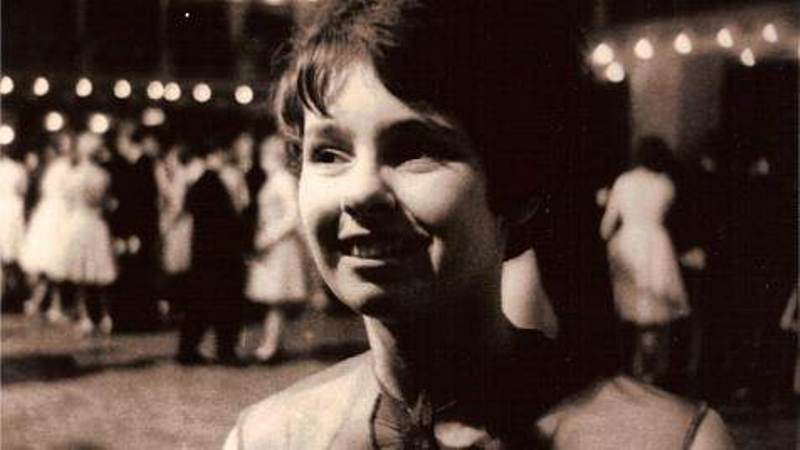
Největší přání
dir. Jan Špáta, cinematography by Vladimir Skalský, Czech Republic 1964, documentary film, 31 min.
23rd November (Friday), 9.30 p.m.
Małopolski Ogród Sztuki – Small Screening Room

Klasyczny dokument z okresu poprzedzającego Praską Wiosnę. W jednym z wywiadów operator filmowy Jan Špáta powiedział o swoim debiucie: „Zadane w dokumencie pytania nie tylko zmuszają młodzież do wypowiedzi, ale nurtują także nas, starszych. Co więcej, prowokują do wyrażenia szczerych opinii. Wykorzystując medium filmowe, chciałem pokazać dzisiejszą młodzież. Ich nowy system wartości bywa często dyskredytowany. Nie jestem jedynym, który zastanawia się nad tym problemem. Życzę sobie, żeby ten dokument wzbudził zainteresowanie nie tylko wśród „odległych pokoleniowo” widzów, lecz też młodych ludzi, żeby potrafili się z nim utożsamić. Poprzez „Największe życzenie” zamierzałem pchnąć ankietę w kierunku filmowości. Jestem przekonany, że ankieta, która nie ujmuje problemów w sposób filmowy, nie ma prawa bytu. Dlatego mój dokument składa się zarówno z „klasycznych ujęć” reportera z mikrofonem, jak scen odległych od tej ograniczającej formy. Trzeba podkreślić, że film nie ma pesymistycznego wydźwięku i nie powinien być odebrany w ten sposób. Przyznaję, że pojawiają się też smutne momenty. Chodzi o sceny zrealizowane w praskich pasażach, gdzie trudno mówić o elokwencji i szlachetnych ideałach bohaterów. To część znudzonej młodzieży, która zabija czas, nie znając wyjścia z pustki, jaką sama sobie stworzyła. Jednak zdecydowana większość sfilmowanych osób charakteryzuje się tym, co stanowi sedno współczesnej młodzieży: wyczuleniem na prawdę i pragnieniem sprawiedliwości.”

Největší přání
reż. Jan Špáta, zdj. Vladimir Skalský, Czechy 1964, dokument, 31 min.
23 listopada (piątek), 21.30
Małopolski Ogród Sztuki – Sala mała

Miloš Forman: What doesn’t kill you…
In his documentary, Miloš Forman: What Doesn’t Kill You... (Miloš Forman: Co te nezabije…), Miloš Šmídmajer takes a closer look at 5 years of the director’s life, tries to decipher his way of thinking and shed some light onto some of the intimate episodes in his bio-graphy. Forman’s professional work had its natural inspiration in his personal life. This documentary does not present the biography in a typical way. Forman’s profile was interwoven into the frames of the “short story” of his filmmaking. This film makes us aware of the importance of the productions which translate emotions into the screen and touch the highest values, such as man’s freedom. And Miloš Forman exceptionally convincingly personified the value of individual freedom.
The film comprises interviews with the director’s friends and family as well as actors who cooperated with Forman in making his most famous titles. On the screen we can see, among others: Fahrid Murray Abraham, Oscar-winner for the role of the Italian composer Antonio Saleri in the music drama Amadeus, Oscar-nominee Woody Harrelson, who played the part of Larry Flynt, Louise Fletcher – Oscar-winner for the role of sister Mildred Ratched in One Flew Over the Cuckoo’s Nest, Natalie Portman and Javier Bardem (Goya’s Ghosts) and Anette Bening (Valmont).
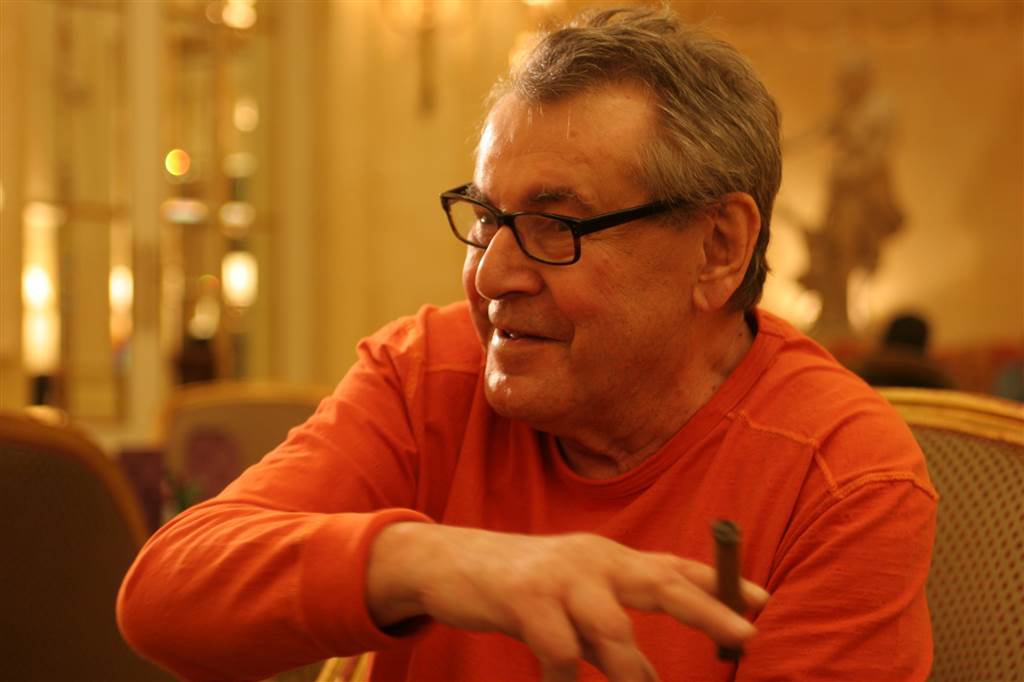
Miloš Forman: co te nezabije...
dir. Milošlav Šmídmajer, cast: Miloš Forman, Saul Zaentz, Paul Rassam, Michael Douglas, Jean-Claude Carriere, Martina Formanová, Petr Forman, Matěj Forman, Natalie Portman, Louise Fletcher, Woody Harrelson, F. Murray Abraham, Theodor Pištěk, Javier Bardem, Czech Republic 2009, documentary film, 100 min.
21st November (Wednesday), 4 p.m.
Kijów Centrum – Large Screening Room

Miloš Forman: Co cię nie zabije…
W swym dokumencie „Miloš Forman: Co cię nie zabije…” Miloš Šmídmajer przygląda się przez 5 lat życiu reżysera, stara się rozszyfrować jego sposób myślenia i rzucić światło na niektóre z intymnych wątków jego biografii. Praca zawodowa Formana miała bowiem swoje naturalne źródło w jego życiu prywatnym. Dokument ten nie przedstawia życiorysu w sposób typowy. Sylwetka Formana wpleciona została w ramy „krótkiej historii” kręcenia jego filmów. Obraz ten uzmysławia, jak ważne są produkcje, które przenoszą na ekran emocje i dotyczą najwyższych wartości, takich jak wolność człowieka. A Miloš Forman niezwykle przekonująco uosabiał wartość wolności osobistej.
Film zawiera wywiady z przyjaciółmi i rodziną reżysera, a także aktorami, którzy współpracowali z Formanem w czasie produkcji jego najbardziej znanych tytułów. Na ekranie pojawia się m.in.: Fahrid Murray Abraham – nagrodzony Oscarem za rolę włoskiego kompozytora Antonio Saleriego w dramacie muzycznym „Amadeusz”; nominowany do Oscara Woody Harrelson – odtwórca postaci Larry’ego Flynta; Louise Fletcher – zdobywczyni Oscara za rolę siostry Mildred Ratched w „Locie nad kukułczym gniazdem”; Natalie Portman i Javier Bardem („Duchy Goi”); oraz Anette Bening („Valmont”).

Miloš Forman: co te nezabije...
reż. Milošlav Šmídmajer, wyst. Miloš Forman, Saul Zaentz, Paul Rassam, Michael Douglas, Jean-Claude Carriere, Martina Formanová, Petr Forman, Matěj Forman, Natalie Portman, Louise Fletcher, Woody Harrelson, F. Murray Abraham, Theodor Pištěk, Javier Bardem, Czechy 2009, dokument, 100 min.
21 listopada 2018 (środa), 16.00
Kijów Centrum – Sala duża

The most renowned feature animated film by the recently deceased Leszek Gałysz, author of well-known and highly valued animated series for children.
The twin brothers Jacek and Placek were born in a little town of Zapiecek. The boys were reluctant to work and dreamt of finding a place where they wouldn’t have to do any work at all. One day they decide to escape the town and look for such a land. During their long journey the twins have lots of various adventures.
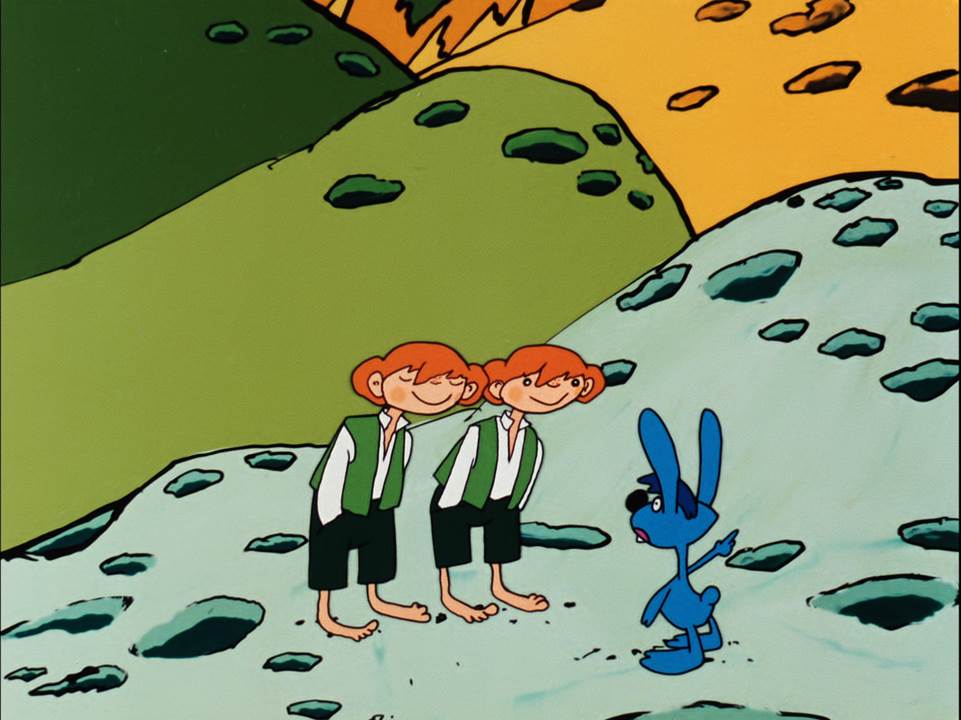
Jacek and Placek
directed by Leszek Marek Gałysz, screenplay by Krzysztof Kowalski, Leszek Marek Gałysz, cinematography by Barbara Stankiewicz, music by Jan Borysewicz, Poland 1992, animation, 72 min.
22nd November (Thursday), 12 p.m.
Kijów Centrum – Large Screening Room

Najgłośniejszy pełnometrażowy film animowany niedawno zmarłego Leszka Gałysza, twórcy znanych i cenionych seriali animowanych dla dzieci.
W małym miasteczku, Zapiecku, przyszli na świat dwaj bliźniacy: Jacek i Placek. Chłopcy, niechętni wszelkiej pracy, marzyli o tym, aby znaleźć krainę, w której nie trzeba pracować. Wkrótce uciekli z miasteczka w poszukiwaniu owego miejsca.

Jacek i Placek
reż. Leszek Marek Gałysz, scen.: Krzysztof Kowalski, Leszek Marek Gałysz, zdj. Barbara Stankiewicz, muz. Jan Borysewicz, Polska 1992, animacja, 72 min.
22 listopada (czwartek), 12.00
Kijów Centrum – Sala duża

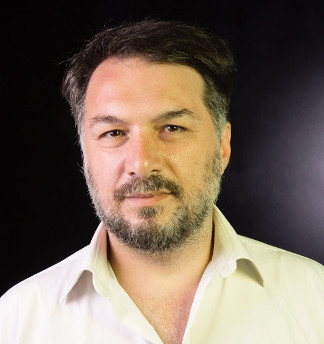 DIRECTOR, ANIMATOR, ILLUSTRATOR
DIRECTOR, ANIMATOR, ILLUSTRATOR
After working as a graphic designer, experimenting with all forms of expression and communication for the past 20 years, he has finally discovered his true passion: animation. He creates, designs and participates in the realization of commercials and video clips, TV theme songs and educational products, documentaries, specials and feature films. He supervised the animation for the documentary Gli Occhi più Azzurri, in the educational series Docucartoon, and the episode Giga & Stick for INAF, before embarking on the collaboration with MAD Entertainment. His works include: the music video for Foja’s Donna Maria, the promo for the movie A Skeleton Story and the theme song for the Festival Crossmediale Cartoons on the Bay. Assistant director, 2D supervisor and animation editor for the feature film L’Arte della Felicità. Winner of the 2014 European Film Awards for Best European Animated Film. He teaches Digital Animation at the Italian school of Comix, for which he directed the promotional commercial Chi Sogna Disegna and the short film Mezzanotte di Segni. He is also member of the board of ASIFA Italia (Associazione Internazionale Film di Animazione). Gatta Cenerentola is his first feature film as director.
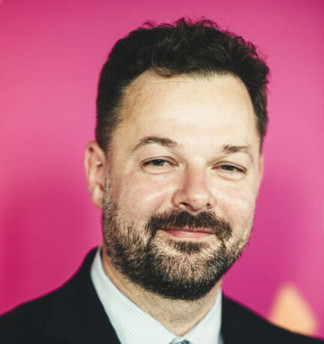 Zastępca Dyrektora Departamentu Własności Intelektualnej i Mediów w Ministerstwie Kultury i Dziedzictwa Narodowego. Prawnik specjalizujący się we własności intelektualnej, wykładowca w Warszawskiej Szkole Filmowej (prawo autorskie dla studentów reżyserii oraz nowoczesne rynki filmowe i multimedialne). Obecnie odpowiada za wsparcie rządowe dla sektorów kultury i kreatywnych, nadzór nad instytucjami kultury w obszarze filmu oraz programy wspierające digitalizację dziedzictwa i upowszechnianie zbiorów cyfrowych.
Zastępca Dyrektora Departamentu Własności Intelektualnej i Mediów w Ministerstwie Kultury i Dziedzictwa Narodowego. Prawnik specjalizujący się we własności intelektualnej, wykładowca w Warszawskiej Szkole Filmowej (prawo autorskie dla studentów reżyserii oraz nowoczesne rynki filmowe i multimedialne). Obecnie odpowiada za wsparcie rządowe dla sektorów kultury i kreatywnych, nadzór nad instytucjami kultury w obszarze filmu oraz programy wspierające digitalizację dziedzictwa i upowszechnianie zbiorów cyfrowych.
A feature film where the various elements of beauty, fear, disorder and the narrative itself are born from the same precarious elements that are in permanent states of change. It is the story of a young woman who is hiding in a house, but it is also the story of a physical and mental world that falls apart, destroys itself and renews itself time and again. It is an animal in a state of relentless mutation.
The air of folklore and fantasy in a colony of religious fundamentalists in Chile. Nightmarish visions, people magically transformed into physical objects, talking animals. Wildness of the heart and curiosity which often leads straight to hell. This stop-motion animated film by the two Chilean artists is a grotesque record of a young woman’s initiation journey into the unknown.
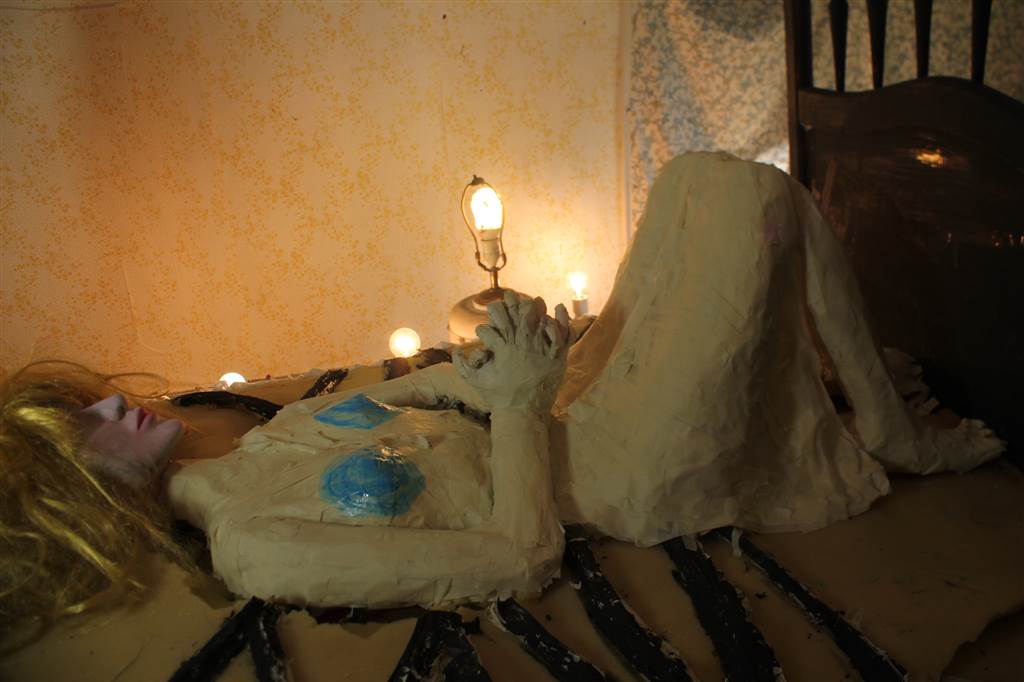
La Casa Lobo
Directed by: Cristóbal León, Joaquin Cociña, screenplay by: Cristóbal León, Joaquin Cociña, Alejandra Moffat, Chile 2018, animation, 73 min.
24th November (Saturday), 5 p.m.
Kijów Centrum – Large Screening Room



 Kaja Renkas is an artist, designer and poster artist who in her art makes of the high-tech digital media. She is a graduate of the printmaking department of the Academy of Fine Arts in Katowice. Since 2011 she has been working as a pedagogue at the Institute of Art of the Silesian University, at the Video Games and Virtual Space Design department. She is a laureate of numerous awards and distinctions for her posters; her works can be found, among others, in the Poster Museum in Wilanów, National Museum in Poznań, Poster Museum in Osaka. She has participated in many individual exhibitions all over the world at, among others, Haight Street Art Center, San Francisco (USA); Gallery 215, Northern Illinois University, DeKalb (USA); 2600 Cherokee Street, St. Louis (USA); Gallery of the Belorussian Academy of Fine Arts, Minsk; Gallery Zed, Leuven (Belgium); Polish Poster Gallery, Berlin (Germany). She has run graphic design workshops in Great Britain, USA, Turkey and Romania. She has taken part in the world’s most important poster events held in, among others, Warsaw, Bolivia, Teheran, Lahti, Toyama and Moscow. Kaja Renkas is the author of this year’s poster of the IFF Etiuda&Anima 2018 as well as the poster of the promotional event called Polish School of Animation – Next Generations IV; Stuttgart, Turku, Viborg, Volda, Riga organized by Etiuda&Anima Foundation.
Kaja Renkas is an artist, designer and poster artist who in her art makes of the high-tech digital media. She is a graduate of the printmaking department of the Academy of Fine Arts in Katowice. Since 2011 she has been working as a pedagogue at the Institute of Art of the Silesian University, at the Video Games and Virtual Space Design department. She is a laureate of numerous awards and distinctions for her posters; her works can be found, among others, in the Poster Museum in Wilanów, National Museum in Poznań, Poster Museum in Osaka. She has participated in many individual exhibitions all over the world at, among others, Haight Street Art Center, San Francisco (USA); Gallery 215, Northern Illinois University, DeKalb (USA); 2600 Cherokee Street, St. Louis (USA); Gallery of the Belorussian Academy of Fine Arts, Minsk; Gallery Zed, Leuven (Belgium); Polish Poster Gallery, Berlin (Germany). She has run graphic design workshops in Great Britain, USA, Turkey and Romania. She has taken part in the world’s most important poster events held in, among others, Warsaw, Bolivia, Teheran, Lahti, Toyama and Moscow. Kaja Renkas is the author of this year’s poster of the IFF Etiuda&Anima 2018 as well as the poster of the promotional event called Polish School of Animation – Next Generations IV; Stuttgart, Turku, Viborg, Volda, Riga organized by Etiuda&Anima Foundation. Born in 1943, Ak-Bułak, in the territory of today’s Kazakhstan, is a film director and scriptwriter who graduated from the directing department of Lodz Film School. He is a younger brother of a director Andrzej Kondratiuk. Already as a student, he made his first international success at the festival in Oberhausen in 1969 with his etude titled “Let’s Not Talk About It Anymore” (“Nie mówmy o tym więcej”). At the turn of the 1960s and 70s he made such succesful TV films as: “How to Win a Woman”, “Money and Fame” (“Jak zdobyć kobietę, pieniądze i sławę”, 1969), “Available Girls” (“Dziewczyny do wzięcia”, 1972) and “Blissful” (“Wniebowzięci”, co-directed with his brother Andrzej, 1973). Films of both Kondratiuk brothers are said to share similarities with those of the Czech film wave, especially the ones made by Forman and Menzel. Later, after moving abroad, Janusz Kondratiuk was for many years a film directing lecturer at the university in Linz. Recently, he has been again collaborating with the Polish television and directing some episodes of TV series. His latest feature autobiographical film “Fighting Like Cat and Dog” (“Jak pies z kotem”) was a considerable success at this year’s Gdynia Film Festival and won awards for the best actors Olgierd Łukaszewicz and Aleksandra Konieczna.
Born in 1943, Ak-Bułak, in the territory of today’s Kazakhstan, is a film director and scriptwriter who graduated from the directing department of Lodz Film School. He is a younger brother of a director Andrzej Kondratiuk. Already as a student, he made his first international success at the festival in Oberhausen in 1969 with his etude titled “Let’s Not Talk About It Anymore” (“Nie mówmy o tym więcej”). At the turn of the 1960s and 70s he made such succesful TV films as: “How to Win a Woman”, “Money and Fame” (“Jak zdobyć kobietę, pieniądze i sławę”, 1969), “Available Girls” (“Dziewczyny do wzięcia”, 1972) and “Blissful” (“Wniebowzięci”, co-directed with his brother Andrzej, 1973). Films of both Kondratiuk brothers are said to share similarities with those of the Czech film wave, especially the ones made by Forman and Menzel. Later, after moving abroad, Janusz Kondratiuk was for many years a film directing lecturer at the university in Linz. Recently, he has been again collaborating with the Polish television and directing some episodes of TV series. His latest feature autobiographical film “Fighting Like Cat and Dog” (“Jak pies z kotem”) was a considerable success at this year’s Gdynia Film Festival and won awards for the best actors Olgierd Łukaszewicz and Aleksandra Konieczna. Born in 1948 in Poznań, is a graduate of the National Higher School of Fine Arts in Poznań. He is an author of animated films and a pedagogue leading an animation studio at the animation department of the University of Arts in Poznań and Academy of Fine Arts in Warsaw. From the beginning of his creative career he has been inspired by the media dimension of animated film, sometimes making references to the tradition of graphic arts and prehistory of cinema (Magritte, Muybridge). He is regarded as an artist having a lot in common with a seeking attitude of Zbigniew Rybczyński from his most fruitful period of artistic creativity. Neumann’s films are included into the experimental trend in Polish animation and defined as combined films. They have been awarded at numerous festivals in Poland and abroad (among others, in Kraków, Poznań, Huesca, Oberhausen, Lausanne). In his career, apart from author films, he has also made films on commission (for classical music) as well as animations for children. Hieronim Neumann has been our festival’s guest a great number of times. In 2009 he presented his ”Self-portrait”, in 2011 he served as the chairman of ANIMA international competition jury, and last year, during the opening ceremony of the 24th IFF Etiuda&Anima 2017 he showed his latest combined film “Lift” (“Winda”) in which he is again trespassing the boundaries of animation.
Born in 1948 in Poznań, is a graduate of the National Higher School of Fine Arts in Poznań. He is an author of animated films and a pedagogue leading an animation studio at the animation department of the University of Arts in Poznań and Academy of Fine Arts in Warsaw. From the beginning of his creative career he has been inspired by the media dimension of animated film, sometimes making references to the tradition of graphic arts and prehistory of cinema (Magritte, Muybridge). He is regarded as an artist having a lot in common with a seeking attitude of Zbigniew Rybczyński from his most fruitful period of artistic creativity. Neumann’s films are included into the experimental trend in Polish animation and defined as combined films. They have been awarded at numerous festivals in Poland and abroad (among others, in Kraków, Poznań, Huesca, Oberhausen, Lausanne). In his career, apart from author films, he has also made films on commission (for classical music) as well as animations for children. Hieronim Neumann has been our festival’s guest a great number of times. In 2009 he presented his ”Self-portrait”, in 2011 he served as the chairman of ANIMA international competition jury, and last year, during the opening ceremony of the 24th IFF Etiuda&Anima 2017 he showed his latest combined film “Lift” (“Winda”) in which he is again trespassing the boundaries of animation. Born in 1972 in Żilina in Slovakia. He graduated from the animation department of FAMU in Prague in 1999 and since then he has been working there as an animation lecturer. Starting from 2000 he has been living in Malešov where he founded Zvon Studio. He makes his own film, working as a director, scriptwriter, animator, editor and producer. As a student he participated in the 3rd IFF Etiuda (1996) with his film “Maskin Kills Koskin” and in the 5th IFF Etiuda (1998) during which he was distinguished with a honorary mention for his “Bloody Hugo” which was recognized as the best animation in the festival competition. Klimt is an author of short and feature animated films which have been numerously awarded at various festivals – his “Filmfarum” (2002) and “Filmfarum II” (2006) received, among others, the award of the Czech Film Academy – the Czech Lions. His latest feature animation “Laika” (2017), which we present at this year’s Anima& Etiuda Festival out of competition, was also awarded with the Czech Lion. Aurel Klimt is also the author of theatre plays and producer of commercials.
Born in 1972 in Żilina in Slovakia. He graduated from the animation department of FAMU in Prague in 1999 and since then he has been working there as an animation lecturer. Starting from 2000 he has been living in Malešov where he founded Zvon Studio. He makes his own film, working as a director, scriptwriter, animator, editor and producer. As a student he participated in the 3rd IFF Etiuda (1996) with his film “Maskin Kills Koskin” and in the 5th IFF Etiuda (1998) during which he was distinguished with a honorary mention for his “Bloody Hugo” which was recognized as the best animation in the festival competition. Klimt is an author of short and feature animated films which have been numerously awarded at various festivals – his “Filmfarum” (2002) and “Filmfarum II” (2006) received, among others, the award of the Czech Film Academy – the Czech Lions. His latest feature animation “Laika” (2017), which we present at this year’s Anima& Etiuda Festival out of competition, was also awarded with the Czech Lion. Aurel Klimt is also the author of theatre plays and producer of commercials. Born in 1953 in Warsaw, is a graduate of the National Higher School of Fine Arts in Poznań (with a diploma from prof. Waldemar Świerzy’s studio). He works in the field of functional graphics and is widely known for his film, theatre and festival posters, as well as his socially and politically engaged graphic works. He has been succesful both in Poland and abroad and as a representative of yet another generation of the Polish poster school, he has received a number of awards, among others in competitions for the best poster announced by ”The Hollywood Reporter” in Los Angeles (the so-called Oscar posters). Having already had a considerable artistic output from the period before Poland’s political transformation, he knew how to adapt to the new economic reality and the world of commercial advertising and make use of the possibilities created by new technologies. We are very pleased to inform that Andrzej Pągowski is the author of the next year’s 26th edition of International Film Festival Etiuda&Anima 2019.
Born in 1953 in Warsaw, is a graduate of the National Higher School of Fine Arts in Poznań (with a diploma from prof. Waldemar Świerzy’s studio). He works in the field of functional graphics and is widely known for his film, theatre and festival posters, as well as his socially and politically engaged graphic works. He has been succesful both in Poland and abroad and as a representative of yet another generation of the Polish poster school, he has received a number of awards, among others in competitions for the best poster announced by ”The Hollywood Reporter” in Los Angeles (the so-called Oscar posters). Having already had a considerable artistic output from the period before Poland’s political transformation, he knew how to adapt to the new economic reality and the world of commercial advertising and make use of the possibilities created by new technologies. We are very pleased to inform that Andrzej Pągowski is the author of the next year’s 26th edition of International Film Festival Etiuda&Anima 2019.



 DIRECTOR, ANIMATOR, ILLUSTRATOR
DIRECTOR, ANIMATOR, ILLUSTRATOR Zastępca Dyrektora Departamentu Własności Intelektualnej i Mediów w Ministerstwie Kultury i Dziedzictwa Narodowego. Prawnik specjalizujący się we własności intelektualnej, wykładowca w Warszawskiej Szkole Filmowej (prawo autorskie dla studentów reżyserii oraz nowoczesne rynki filmowe i multimedialne). Obecnie odpowiada za wsparcie rządowe dla sektorów kultury i kreatywnych, nadzór nad instytucjami kultury w obszarze filmu oraz programy wspierające digitalizację dziedzictwa i upowszechnianie zbiorów cyfrowych.
Zastępca Dyrektora Departamentu Własności Intelektualnej i Mediów w Ministerstwie Kultury i Dziedzictwa Narodowego. Prawnik specjalizujący się we własności intelektualnej, wykładowca w Warszawskiej Szkole Filmowej (prawo autorskie dla studentów reżyserii oraz nowoczesne rynki filmowe i multimedialne). Obecnie odpowiada za wsparcie rządowe dla sektorów kultury i kreatywnych, nadzór nad instytucjami kultury w obszarze filmu oraz programy wspierające digitalizację dziedzictwa i upowszechnianie zbiorów cyfrowych.